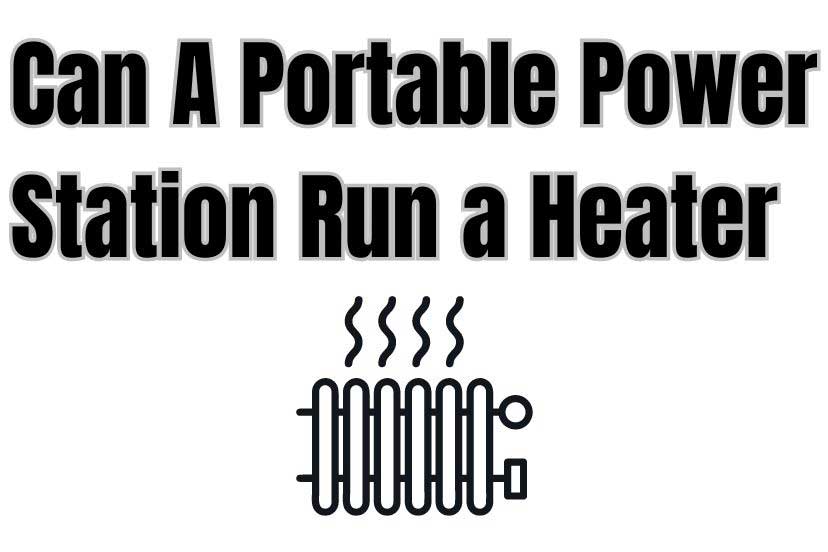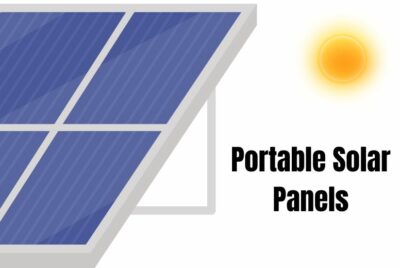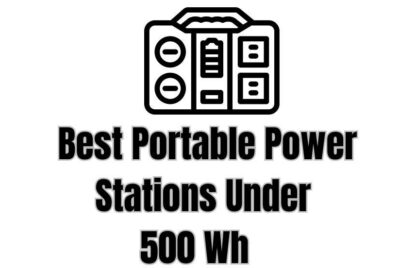Can I Run A Heater On A Portable Power Station?
I may earn a commission for purchases made through my links. It helps me run this site. Check out my disclosure for more details.
Portable power stations are amazing energy generation and deployment sources for running household appliances and gadgets. With portable power on the go and during blackouts, the basics of human needs can be met. Food, energy and heat. Then add the luxuries of communication and entertainment devices on top of that and we have the current model for high class off-grid living. And going back to the basics of keeping warm off-grid that begs the question, can a portable power station run a heater? Let’s dive in and find out.
Drum Roll….
Yes, you can run a heater on a portable power station. It’s important to calculate power requirements and follow safety precautions for a successful mission. Keep reading to learn more.
How To Run Your Heater With A Portable Power Station
Running a heater on a portable power station is indeed possible, but if you choose the wrong power station you won’t get much run time. You have to factor in the power rating of the heater, and the size of the power stations battery. We’ll delve into these factors below in detail and throw in some safety precautions for good measure to provide you with a comprehensive understanding of how to run a heater on a portable power station.
First, check the operating power rating of the heater. Most portable heaters have a power rating of between 500-1500 watts. This is very important because your power station has to have a high enough wattage to support your heater. So say, for example, your heater has a power rating of 1500 watts, you’ll then need a power station with a wattage of at least 1500 watts to run the heater. If you use a power station with a lower rating than the appliance, then it won’t work.
The battery needs to have a high capacity to run your heater. If not, it won’t be wrong until your warm room turns cold as the heat powers off after draining all the battery in your low-capacity power station.
Once you have the battery capacity, its easy to work out how long it can run the heater for. This is dependent on the power rating of the heater and the battery capacity of the power station. So if your heater outputs 1000 watts and your power station has a battery capacity rated at 2000 watt-hours, the heater can run for approximately 2 hours before the battery is drained.
When you are plugging a heater into your portable power station, it’s very important to take the necessary safety precautions to avoid any accidents or damage. Here are some tips to keep in mind.
- (This is not really safety related but practical) – fully charge up your power station before plugging in a heater.
- Do not use the heater with an extension cord or power strip.
- Keep the heater away from flammable materials, and make sure it has enough space for proper ventilation.
- Do not leave the heater unattended while it’s running.
- Always follow the manufacturer’s instructions and safety guidelines for both the heater and the power station.
By following these safety precautions, you and those with you will remain in a safe environment.
To summarise, running a heater on a portable power station can be done, as long as you have accounted for the power rating of the heater, the battery capacity in the power station, and you follow some common sense safety precautions. Do this, and you’ll get more safe runtime out of your heater when you are running it from a power station.
Allow For These When Running a Heater on a Portable Power Station
Running a heater is possible, but make sure to factor in these.
Power Rating of the Heater
Portable power stations can actually run household appliances like TVs, fridges, power tools and heaters. But before putting this into practice, assess the power rating of the heater to avoid super short runtimes and even worse, not being able to run the heater at all. Heaters come in all shapes, types, and sizes, so they have varying power requirements, so it’s essential to ensure that the portable power station can meet the specific power demands of the heater. Once you have this figured out, you can select the right power station for the job, or opt for a less powerful heater if you already have a power station if you’ve worked out it does not have a high enough capacity for a long enough run time.
So focus in on these:
- Wattage: This is the measure of power the heater operates at. Check this and contrast it with the power station and see if it can handle the wattage. It needs to be the same, but its typical better if it is more than the heater has, and you may have to run more than just the heater at the same time, and also want a few extra watts to compensate for any short burst wattage output that the heater has. You also don’t want to always run your power station on the red line, that is to the limits of its wattage. If the heater requires more watts than the power station can provide, it simply won’t run. A lot of heaters start at 1500W. So unless you have a power station that outputs 1500W it will not be able to run it. And if your power stations battery only has 1500Wh, then you will only get about an hours run time out of your heater.
- Battery Capacity – Make sure it’s adequate unless you want to experience a really short run time. So if your heater runs at 500 watts, you will get about 3 hours out of a 1500Wh power station. About an hour if the heater is 1500W and run on the same 1500Wh capacity power station. Higher battery capacity is key for running heaters.
- Heating Settings: Some heaters have multiple heating settings, such as low, medium, and high. And each of these settings may require a different amount of power to operate. So check the heater manual for the power rating of the heater on each setting, as you may find a high setting can drain your battery faster than you think. So if you are going somewhere that requires extra warmth, you may need a higher-capacity power station or look to alternative sources of power or heating like electric blankets, a traditional fire, or maybe a combination of using a heater and some blankets and extra layers so you can run the heater on a lower setting.
- Additional Features: Check out if your heater has any additional features, such as a fan or thermostat, that need extra power to run.
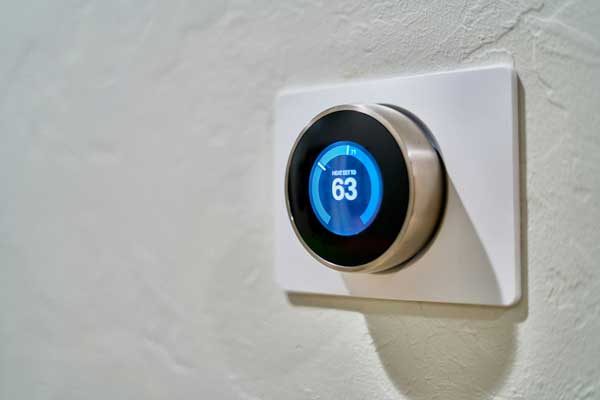
Overall, understanding the power rating of a heater is crucial when determining if both your power station and heater can work together. You may have to decrease the power of the heater or up the battery capacity of the power station for better compatibility. So understanding wattage and battery capacity is essential for working out the aplliances run times, and of course to check whether it will run at all.
Battery Capacity of the Power Station
The power station’s battery capacity, or rather it’s size directly affects how long the heater can be run before it needs a recharge. This section will look into the technical aspects of that and how it can affect the heaters performance.
The battery capacity of a power station is measured in watt-hours (Wh) and it determines the amount of energy the battery can store. This energy is then used to power devices and household appliances such as heaters. But just because something can be run on a power station, this doesn’t mean it can run for long. Heaters are power hogs, and to run one effectively you need to have a big sized battery, well big in terms of battery capacity, as the higher this is, the more energy it can store, and the more energy it can transfer to powering the heater.
So if you want to use a portable power station with your heater, look at the power consumption of your heater and compare it to the battery capacity the power station has. This will give you an idea of how long the heater can run on a single charge.
You can also make the most of the available battery capacity, and optimize the power usage of your heater by following these steps.
- Use a heater with a lower power rating: The power rating of a heater is the amount of energy it consumes per hour. Opting for a heater with a lower power rating will put less drain on the battery. It can also prolong the battery life of your power station, which is measured in cycles. Each time you have to recharge your battery you drain a cycle off its life. This is measured anywhere form 300-3500 cycles per power station.
- Put the heater on a lower heat setting: This will lower its power consumption, and you’ll get more run time and less strain on the battery life of your power station.
- Use a timer: If your heater has a timer function, you can set it to turn off after a certain amount of time or in regular intervals. This will prevent the heater from running unnecessarily and draining the battery. Also don’t put the heater in a room unsupervised. Heaters warm up a room pretty fast, so you don’t need to keep them on when you are not in the room. This is also a fire hazard. Don’t also leave heaters unattended with pets or children as they could knock them over and cause a fire hazard.
Here’s a few factors that can affect the battery capacity of your power station
- Battery Age : As a battery ages, its capacity decreases. It loses life cycles, which means it’s not as strong as it used to be. It can lose up to 20% and more of it’s original watt hour (Wh) capacity as it ages. An older battery may not be able to power a heater for as long as a newer one.
- Temperature Extremes: Super hot or cold temperatures can impact battery performance and also reduce its capacity. Many power stations have heat protection circuits, and these can trip in severe weather.
- Reduced charging cycles: Naturally, each time a battery is charged and discharged, it goes through a charging cycle. So the more it gets used over time, the more charging cycles it goes through, and this lowers the battery’s capacity.
By understanding the importance of the power stations battery capacity and how to optimize the power usage on your heater, you can run your heater through the correct-sized power station for longer, and protect the power stations battery life.
Safety Precautions
When using a heater with a portable power station, it is important to prioritize these common sense safety protocols to avoid potential hazards.
- Space and to a certain extent, ventilation is critical when using an electric heater with a portable power station. You won’t need to worry about carbon monoxide poisioning, but you can get burned and furniture can go ablaze if its too close to your heater. Your heater can shut down if it doesn’t have enough ventilation. Many space heaters blow heat out the back, but this will not work effectively if you place your heater too close to a wall. Ventilation will also stop the room from getting too stuffy, you could fall asleep and leave your room and its occupants unsupervised.
- Keep a close eye on the power levels of your portable power station while running a heater, as they can drain it fast. If you’re power station has an app you can monitor it and adjust the settings there, or alternatively, switch the time limiter on at the heater if it has one. Heaters can go through a lot of power quickly, so it is important to keep an eye on the battery level to avoid draining it completely.
- You can prevent overheating by using a heater with an auto-shut-off feature once the temperature goes into the red zone. This will help prevent any potential fire hazards.
- Keep flammable materials, such as curtains, cushions, blankets, and not too mention shaggy pets and children, at a safe distance from the heater to avoid any fire hazards.
- Never leave an electric heater unattended while it is in use, no matter how many smoke alarms, cameras, or built-in protection devices your heater or power station has. It only takes a brief moment for your home, trailer, RV or cabin to go ablaze. Even more so if you fall asleep
- Perform regularly check-ups on the heater and power station for any signs of damage or wear and tear. Have them serviced by a qualified professional if you find anything or are in doubt.
Safety is a must if you want to protect yourself and your family, and the lifespan of your expensive equipment.
Types of Heaters Compatible with Portable Power Stations
Electric Heaters
Electric heaters are popular because they work fast and provide clean heat. They are not cheap to run and won’t leave a room warm for long, but that’s a different story.
Naturally, as they are powered by electricity, they are a convenient option for use with portable power stations. In this section, we will delve deeper into the power requirements and operational considerations for using electric heaters with portable power stations, offering valuable insights into their compatibility and performance.
Before using an electric heater with a portable power station, it is important to understand the power requirements of the heater. This will ensure that the power station can handle the load and provide enough power for the heater to function properly. Here are some key factors to consider:
- Wattage: Electric heaters come in a variety of wattages, ranging from 500 watts to 1500 watts. It is important to check the wattage of the heater and compare it to the power output of your portable power station. If the wattage of the heater is higher than the power output of the power station, it may not be compatible.
- Voltage: Most electric heaters operate on standard household voltage of 120V. However, some high-powered heaters may require 240V. Make sure to check the voltage requirements of the heater and ensure that your power station can provide the necessary voltage.
- Amperage: The amperage of an electric heater is another important factor to consider. It is calculated by dividing the wattage by the voltage. For example, a 1500 watt heater operating on 120V would require 12.5 amps. Make sure your power station can handle the amperage of the heater.
Aside from the power requirements, there are also some operational considerations to keep in mind when using electric heaters with portable power stations. These include:
- Runtime: The runtime of an electric heater will depend on the capacity of your power station and the wattage of the heater. For example, a 1000 watt heater will drain a 1000Wh power station in one hour. It is important to keep this in mind when planning for extended use.
- Temperature Control: Most electric heaters come with temperature control settings, allowing you to adjust the heat output. This can help conserve energy and prolong the runtime of your power station.
- Indoor Use Only: It is important to note that electric heaters are designed for indoor use only. They should not be used in outdoor or wet conditions as this can be a safety hazard.
Electric heaters are generally compatible with most portable power stations, as long as the power requirements are met. However, it is always recommended to check the specifications of your power station and the heater to ensure compatibility.
Electric heaters are a convenient and efficient option for portable heating solutions. By understanding the power requirements and operational considerations, you can ensure that your electric heater is compatible with your portable power station and enjoy warm and cozy indoor spaces wherever you go.
Ceramic Heaters
Ceramic heaters are a popular choice for heating in off-grid scenarios due to their energy-efficient operation and effective heat distribution. They are also compatible with portable power stations, making them a convenient option for those looking to stay warm while on the go. In this section, we will delve into the suitability of ceramic heaters for use with portable power stations, providing informative details on their power consumption and performance in off-grid heating scenarios.
Ceramic heaters use a ceramic heating element to produce heat. This element is made of a ceramic material that is heated by electricity. The heat is then dispersed into the surrounding area through a fan or other mechanism. This method of heating is known for its efficiency, as the ceramic element can reach high temperatures quickly and maintain them for longer periods of time.
One of the main advantages of using a ceramic heater with a portable power station is its low power consumption. Ceramic heaters typically use between 750-1500 watts of power, which is significantly less than other types of heaters such as electric or infrared heaters. This makes them a great option for those looking to conserve power while still staying warm.
Ceramic heaters are a reliable choice for off-grid heating scenarios. They are not affected by fluctuations in power supply, making them a stable source of heat when using a portable power station. Additionally, their efficient heating capabilities make them a great option for heating small spaces such as tents, RVs, or cabins.
- Energy-efficient operation
- Effective heat distribution
- Low power consumption
- Stable performance in off-grid scenarios
- Compact and portable design
- Make sure the wattage of the ceramic heater is compatible with the power output of your portable power station.
- Consider the size of the space you need to heat and choose a ceramic heater with the appropriate heating capacity.
- Always follow the manufacturer’s instructions for safe and proper use of the ceramic heater.
- Keep the heater away from flammable materials and never leave it unattended.
In conclusion, ceramic heaters are a reliable and efficient option for heating in off-grid scenarios when used with a portable power station. Their low power consumption and stable performance make them a popular choice among outdoor enthusiasts and those looking to reduce their energy usage. Consider adding a ceramic heater to your off-grid heating setup for a comfortable and cozy experience.
Infrared Heaters
Infrared heaters are a popular choice for those looking for a quick and efficient way to heat their space. These heaters use infrared technology to produce heat, which is then directed towards specific areas or objects in the room. This targeted heating method makes them ideal for use with portable power stations, as they require less energy to heat a space compared to other types of heaters.
When it comes to power output, infrared heaters typically range from 300 watts to 1500 watts. This means they can be powered by most portable power stations, making them a versatile heating option for a variety of situations. Additionally, infrared heaters have a high heating efficiency, with some models boasting up to 90% efficiency. This means that almost all of the energy used is converted into heat, making them a cost-effective choice for heating.
- Targeted Heating: As mentioned, infrared heaters are designed to direct heat towards specific areas or objects. This makes them ideal for heating small spaces or for use in outdoor areas, such as patios or garages.
- Instant Heat: Unlike traditional heaters that take time to warm up, infrared heaters produce heat instantly. This makes them a great option for those who need quick and efficient heating.
- No Noise: Infrared heaters operate silently, making them a great choice for use in bedrooms or other quiet spaces.
- No Dry Air: Unlike some other types of heaters, infrared heaters do not dry out the air in a room. This can be beneficial for those with respiratory issues or allergies.
- Energy Efficient: As mentioned, infrared heaters have a high heating efficiency, meaning they use less energy to produce heat compared to other types of heaters. This can result in cost savings on energy bills.
- Safe to Use: Infrared heaters do not have exposed heating elements, making them a safer option for households with children or pets.
There are two main types of infrared heaters: quartz and ceramic. Both types use infrared technology to produce heat, but they differ in the type of heating element used.
Quartz Infrared Heaters
Quartz infrared heaters use a quartz heating element to produce heat. These heaters are known for their fast heating capabilities and can reach high temperatures quickly. They are also lightweight and portable, making them a popular choice for use with portable power stations.
Ceramic Infrared Heaters
Ceramic infrared heaters use a ceramic heating element to produce heat. These heaters are known for their energy efficiency and can provide consistent heat for longer periods of time. They are also more durable compared to quartz infrared heaters, making them a good choice for long-term use.
Infrared heaters are a versatile and efficient heating option for use with portable power stations. Their targeted heating capabilities, instant heat, and energy efficiency make them a popular choice for a variety of situations. Whether you need to heat a small space or an outdoor area, an infrared heater may be the perfect solution for your heating needs.
Optimizing Power Usage for Efficient Heating
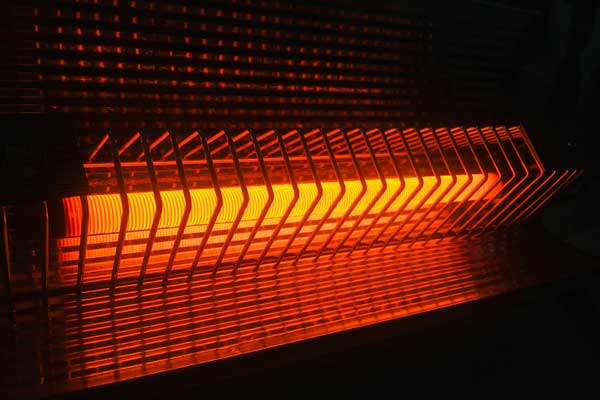
Thermostat Settings
Adjusting the thermostat settings of the heater is a crucial step in optimizing power usage for efficient heating. It not only helps in reducing energy consumption but also ensures that your space is heated to the desired temperature. In this section, we will discuss the impact of thermostat adjustments on power consumption and heating performance, as well as provide tips for maximizing the use of a portable power station with a heater.
The thermostat is the control center of your heater, responsible for regulating the temperature of your space. By adjusting the thermostat settings, you can control how much energy your heater uses and how warm your space will be. This is especially important when using a portable power station, as it allows you to conserve energy and prolong the battery life of your device.
When it comes to setting the temperature on your thermostat, it’s important to find the right balance between comfort and energy efficiency. The ideal temperature for most homes is between 68-72 degrees Fahrenheit. However, this may vary depending on your personal preferences and the climate you live in.
During the colder months, it’s recommended to set your thermostat to the lowest comfortable temperature. This will not only save energy but also reduce your heating bill. For every degree you lower your thermostat, you can save up to 3% on your heating costs.
Investing in a programmable thermostat can also help in optimizing power usage for efficient heating. These thermostats allow you to set different temperature settings for different times of the day, so you can adjust the temperature according to your schedule. For example, you can set the temperature to be lower when you’re away from home and higher when you’re back. This not only saves energy but also ensures that your space is always at a comfortable temperature.
- Don’t place the heaters thermostat near heat sources. Keep it away from heat vents, to get accurate temperature readings.
- Routinely check and replace the batteries in your thermostat to ensure it is functioning properly.
- Consider using a smart thermostat that can be controlled remotely through a mobile app, allowing you to adjust the temperature even when you’re away from home.
- Make sure your thermostat is compatible with your heater to ensure optimal performance.
By following these tips and adjusting your thermostat settings accordingly, you can effectively optimize power usage for efficient heating. This not only helps in reducing energy consumption and costs but also contributes to a more sustainable lifestyle.
Insulation and Draft Prevention
Effective insulation and draft prevention strategies are crucial for maintaining consistent heating levels and minimizing energy wastage when using a portable power station. In this section, we will delve deeper into the importance of insulation and draft prevention and provide practical tips for optimizing power usage and enhancing the overall heating experience with a portable power station.
- Insulation helps to trap heat inside a room, preventing it from escaping and keeping the space warm for longer periods of time.
- Without proper insulation, heat can easily escape through walls, windows, and doors, leading to higher energy consumption and increased heating costs.
- Insulation also helps to regulate the temperature inside a room, keeping it comfortable and consistent.
There are various types of insulation available, each with its own unique benefits and uses. Some common types of insulation include:
- Batt insulation: This type of insulation comes in pre-cut panels and is usually fiberglass, mineral wool, or cotton. It is easy to install and can be used in walls and floors and even in your roof space.
- Blown-in insulation: This type of insulation is made of loose fibers or particles and is blown into walls, attics, or floors using special equipment. It is ideal for hard-to-reach areas and can be used to fill gaps and crevices.
- Spray foam insulation: This type of insulation is made of polyurethane foam and is sprayed onto surfaces, expanding to fill gaps and create an airtight seal. It is ideal for insulating small spaces and can also help to prevent drafts.
In addition to insulation, draft prevention is also essential for optimizing power usage and maintaining a warm and comfortable living space. Here are some practical tips for preventing drafts:
- Close up and drafts : Look for any cracks or gaps around doors, windows and plaster. Seal them up with caulk or weatherstripping to stop heat seeping out and cold air sneaking in.
- Use draft stoppers: Place draft stoppers at the bottom of doors to prevent cold air from seeping in.
- Insulate windows: Use plastic film or insulating curtains to cover windows and prevent drafts.
- Check for leaks: Regularly check for leaks in pipes, vents, and ducts and seal them promptly to prevent drafts.
Aside from insulation and draft prevention, there are other factors that can affect the efficiency of your heating system when using a portable power station. These include:
- Thermostat settings: Make sure to set your thermostat to the optimal temperature for your living space. Lowering the temperature by just a few degrees can significantly reduce energy consumption and save you money on heating costs.
- Proper maintenance: Regularly clean and maintain your heating system to ensure it is running efficiently. This includes changing air filters, cleaning vents and ducts, and scheduling professional maintenance checks.
- Proper usage: Be mindful of how you use your heating system. Avoid leaving it on for extended periods of time when not needed and make sure to turn it off when leaving the house.
By following these tips and implementing effective insulation and draft prevention strategies, you can optimize power usage and enhance the overall heating experience with a portable power station. Remember, a well-insulated and draft-free living space not only keeps you warm and comfortable but also helps to reduce energy consumption and save you money in the long run.
Conclusion
As I conclude this post, it’s evident that you can run a heater with a portable power station, and it can be a practical solution for your off-grid heating needs. But, you have to consider the power rating of the heater, and assess the battery capacity of the power station. When it doubt, you can use a heater that runs on a lower wattage, so you can get longer run times with it. And finally prioritizing safety is a must with an electric heater.

